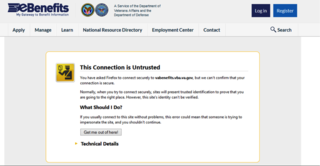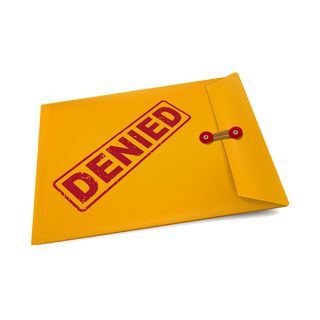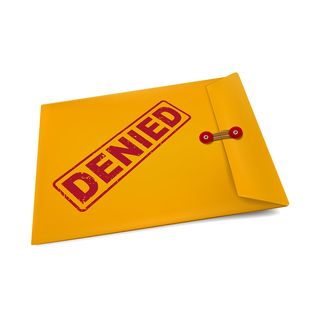When a claimant has received an unfavorable decision from the Veterans Administration, the first inclination is to appeal. The appellate process can take years to resolve. Elderly seniors seeking the wartime pension do not usually have years to wait, as death could occur at any time. When a claimant dies, the claim usually dies too. Thus, it is critical to speed up the process to get an approval sooner rather than later.
 A preferable alternative to appealing is seeking a Request for Consideration. This is when a claimant requests that the VA reconsider one of its decisions that has not yet become final. A decision becomes final one year after it is issued. Thus, you must file a request for reconsideration within a year of the original decision. There is no specific form to file a request for reconsideration; however, we recommend using VA Form 21-4138, Statement in Support of Claim.
A preferable alternative to appealing is seeking a Request for Consideration. This is when a claimant requests that the VA reconsider one of its decisions that has not yet become final. A decision becomes final one year after it is issued. Thus, you must file a request for reconsideration within a year of the original decision. There is no specific form to file a request for reconsideration; however, we recommend using VA Form 21-4138, Statement in Support of Claim.
Common reasons to request a reconsideration of a decision for a pension claim include, but are not limited to, the following:
- Denial of Pension claim for excess income (or only partial approval)
- Denial of Pension with Aid and Attendance
- Denial due to excessive net worth
- Incorrect effective date of the award
Denial of pension claim for excess income (or only partial approval). To qualify for VA pension, the claimant must meet income limitations. Often, in order to meet the limitations, the claimant has recurring out-of-pocket medical expenses that can be deducted from the income, which then reduces the income for eligibility purposes. When the claim is denied or approved for less than expected, it is usually because either the claimant does not have enough medical deductions or the VA did not properly deduct permissible medical expenses. For example, the VA is to deduct all medical expenses for both a veteran and the veteran’s spouse; yet, the VA often does not deduct the spouse’s medical expenses. In that case, a request for reconsideration is a useful strategy to submit the expenses (again) and request that the VA recalculate the award.
Denial of pension with aid and attendance. When a claimant needs the assistance of another person to help with at least two activities of daily living (bathing, dressing, transferring, eating, incontinence/toileting), or needs the regular supervision of another due to dementia (memory loss), then the claimant can receive a supplemental monthly income called aid and attendance. But, before aid and attendance can be granted, the claimant must submit VA Form 21-2680, Application for Aid and Attendance, completed by their treating physician, to the VA. The form must be filled out with very specific language to meet the VA’s standards. When a claim is denied for aid and attendance, it is usually because the claimant either did not submit this form or the physician did not fill it out sufficiently. Getting a new form filled out properly and submitting it with a request for reconsideration will generally garner an approval by the VA.
Denial due to excessive net worth. To qualify, the claimant must have limited resources. If the VA denies a claim due to excessive net worth, once the assets are no longer excessive, the claimant may submit verification of the reduced assets and request the claim be adjudicated again.
Incorrect effective date of award. When filing for pension benefits, it is important to obtain the earliest effective date possible. The sooner the date, the more money the claimant receives. Under the fully developed claim process wherein the VA requires that the claimant submit all application forms and supporting documents simultaneously, months can go by while waiting to obtain a divorce decree, death certificate or the physician’s affidavit for aid and attendance. Instead of waiting in vain (without getting benefits), the claimant can file an Intent to File a Claim on VA Form 21-0996 to “lock in” the eligibility date. This form should only be filed when the claimant meets all financial and medical criteria but is waiting on supporting documents. Once the supporting documents are in hand, then, subsequent to filing the notice of intent, the claimant will file the fully developed claim. There may be months between the two. Once the VA issues its decision, it may have overlooked the intent to file a claim locking in the effective date and instead award the date from the filing of the fully developed claim. So as not to lose the intervening months, you should file a request for reconsideration with a copy of the intent to file a claim that was previously filed.
Although appeals can take several years to resolve, we are seeing that requests for reconsideration are taking less than six months, often only 30 days, to resolve. This is a much better outcome for the client.
If you want to learn critical information on building a thriving practice while serving those who serve our country, register for our FREE WEBINAR this Wednesday at 12 EST.
Here's Just Some of What You'll Discover During this Complimentary Event…
- How and Where to Obtain Quality Clients
- How to Present the Value Proposition
- What to Charge for Planning
- What to Include in Your Engagement Agreement
Victoria L. Collier, Co-Founder, Lawyers with Purpose, LLC, www.LawyersWithPurpose.com; Certified Elder Law Attorney through the National Elder Law Foundation; Fellow of the National Academy of Elder Law Attorneys; Founder and Managing Attorney of The Elder & Disability Law Firm of Victoria L. Collier, PC, www.ElderLawGeorgia.com; Co-Founder of Veterans Advocates Group of America; Entrepreneur; Author; and nationally renowned Presenter.







